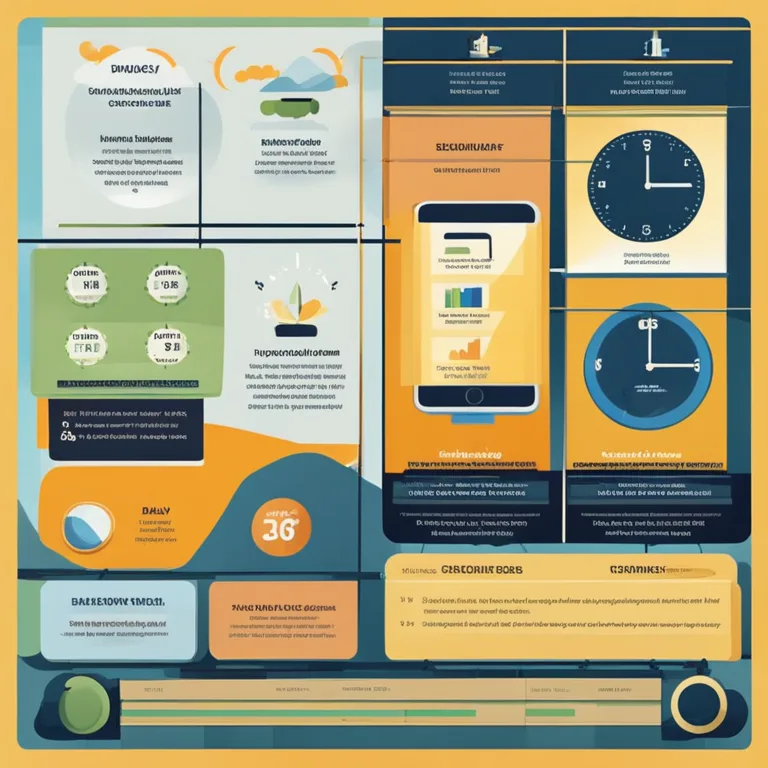
Track Your Biorhythm: A Practical Guide
Discover your natural energy cycles using biorhythms. Learn to align daily activities with your physical, emotional, and intellectual rhythms for improved well-being.
article by Adrian Wallace
Introduction to Biorhythms
Delving into the realm of biorhythms unveils the rhythmic cycles that influence our physical, emotional, and intellectual states. Since the discovery of these rhythms by Dr. Hermann Swoboda and Dr. Wilhelm Fliess in the late 19th and early 20th centuries, individuals have sought to align their activities with personal energy cycles for a harmonious life. Recent advancements in technology have simplified tracking these innate cycles, providing insights into how to live more attuned to our natural oscillations for better health and well-being.

Understanding the Three Cycles
Biorhythms sit on a foundation of three pivotal cycles: physical, emotional, and intellectual. The physical cycle, repeating every 23 days, influences vigor, stamina, and well-being. The emotional cycle, spanning 28 days, reflects mood swings and emotional states. Lastly, the intellectual cycle, rotating every 33 days, affects cognitive functions and analytical skills. Awareness of your position within each cycle can optimize the timing for pivotal tasks, physical activities, or decision-making processes.

Finding Your Personal Biorhythms
Identifying your unique biorhythms begins with simple information: your birth date. Online calculators and smartphone apps have emerged as popular tools that offer daily biorhythm charts by simply entering this data. Opt for applications that ensure privacy while processing your data, and select ones updated to accommodate the latest computational improvements and security enhancements as of 2024 standards.

Maximizing Your Daily Schedule
Aligning daily endeavors with your biorhythms can potentially enhance performance and emotional wellbeing. For instance, engaging in high-intensity workouts during peak physical cycles might yield better results and reduce injury risks. Tackling complex tasks when intellectual rhythms are high can improve focus and productivity. Conversely, understanding your low cycles can prevent missteps by scheduling time for rest and reflection.

Scientific Backing and Skepticism
While numerous advocates highlight the benefits of biorhythmic alignment, the scientific community remains divided. Critics argue that empirical evidence supporting biorhythms is scant, and correlation should not be mistaken for causation. Nonetheless, many individuals report personal success when applying biorhythmic principles. Skeptic or not, tracking your biorhythms may offer an opportunity to introspect and gauge life's natural ebb and flow.
Integrating Biorhythms into Your Life
The adoption of biorhythmic knowledge is more of an art than a science. By periodically analyzing your cycles, you may discern patterns and tendencies that can inform lifestyle adjustments. Start by journaling your activities, feelings, and performance, then cross-reference these observations with your biorhythm chart. Over time, this practice may reveal insights into optimizing your routine for personal effectiveness and satisfaction.
Continuing The Biorhythmic Journey
As with any self-improvement endeavor, consistency is key to yielding discernible results. Whether you're a seasoned biorhythm follower or a newcomer to the concept, modern tools make it easier than ever to track your rhythms and adapt accordingly. Embrace the cycle-centric perspective and you might just find a new rhythm in life that resonates with your personal symphony of energies.
Published: 12/28/2023
Modified: 12/28/2023
More predictions
Come back here soon to learn more about yourself and your future


The Synergy of Cycles: Biorhythm Compatibility
Discover the secrets of biorhythm compatibility and how it might influence personal connections in our comprehensive guide.


The Rhythms of Life: Delving into Biorhythm
Discover how biorhythm cycles influence your physical, emotional, and intellectual wellbeing, and how to track these patterns for optimal living.


Biorhythm: The Significance of Compatibility
Discover the significance of biorhythm compatibility in relationships and how syncing life cycles can impact partnership dynamics.